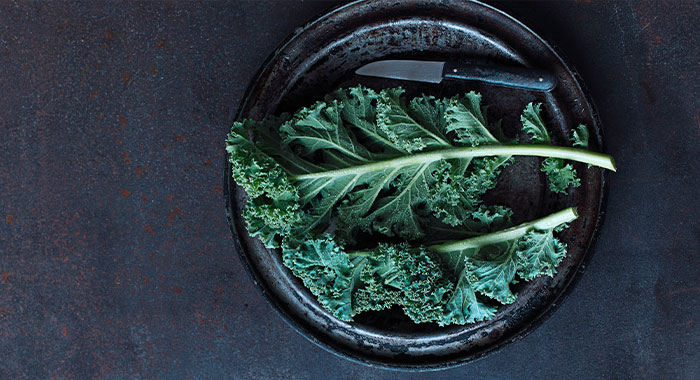
Pronounce it: kay-el
A member of the cabbage family, kale comes in two forms: kale, which has smooth leaves, and curly kale, which has crinkly leaves. Curly kale is the most common of the two.
Instead of forming a head, the leaves grow in a loose rosette at the top of a stem. The leaves are green, sometimes tinged with blue or purple, and their flavour is strong and distinct.
For more information visit www.discoverkale.co.uk.
Availability
Kale is available all year round, but best from mid September to late February.
Choose the best
Go for heads of kale on the smaller side, as they will be more tender. The leaves should be crisp, with a bright colour.
Prepare it
Break the leaves from the stalk, and trim away the tough centre stalk. Wash, then shred or chop.
Store it
In a perforated bag in the fridge. Kale becomes increasingly bitter the longer it is kept, so eat within two or three days.
Cook it
Kale is most commonly boiled. For whole leaves, rinse, then put them in the pan without shaking the water off, cover, then cook for up to 2 minutes, until wilted; drain thoroughly.
For chopped or shredded leaves, put in a pan of water 1cm deep with a pinch of salt, then bring to the boil and simmer up to 5 minutes, until wilted; drain thoroughly. Pan fry (up to 10 minutes).
Alternatives
Try cabbage.
Be the first to comment on "Kale"